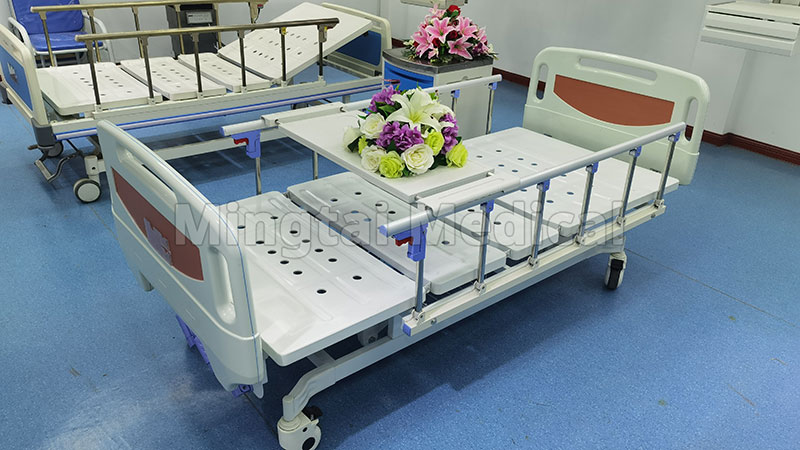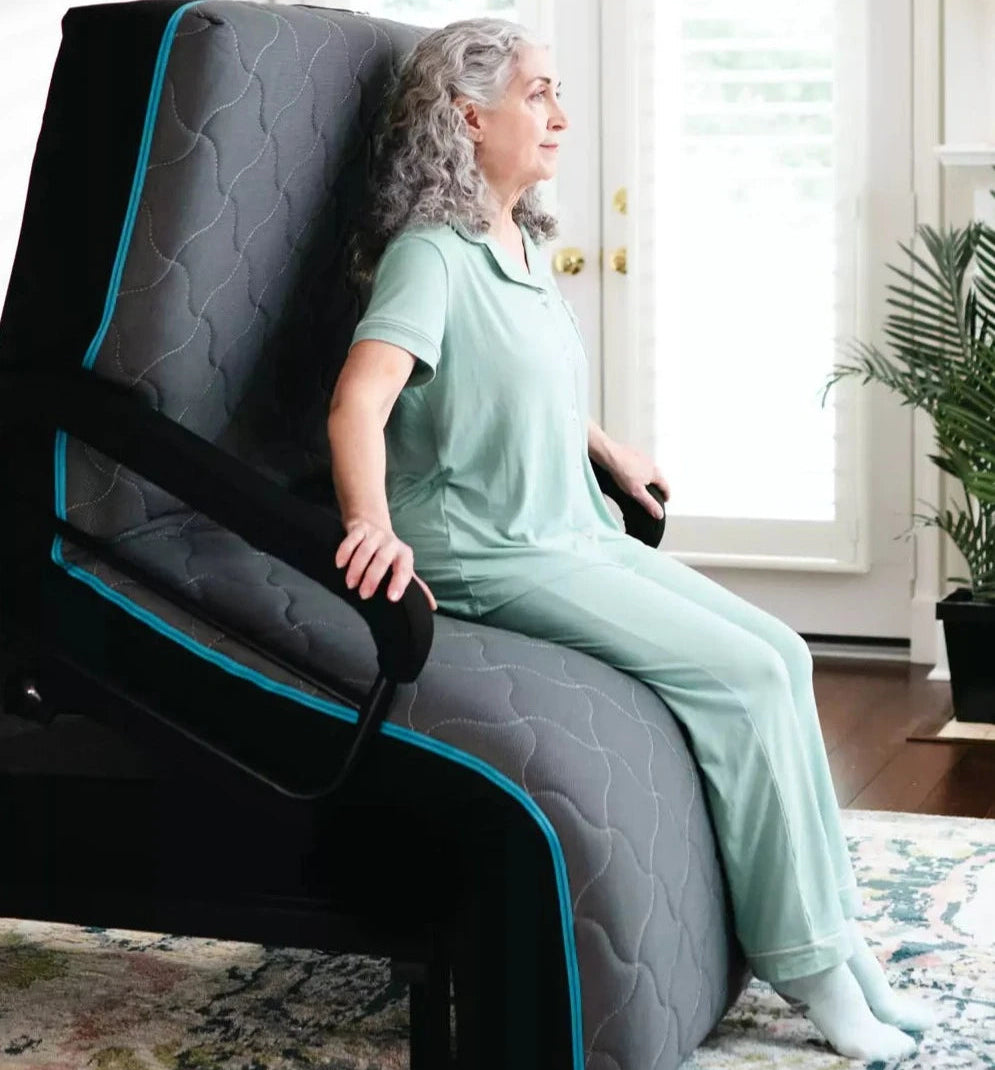The Best Strategy To Use For Hospital Beds For Home Use
The Best Strategy To Use For Hospital Beds For Home Use
Blog Article
Rumored Buzz on Hospital Beds For Home Use
Table of ContentsThe Main Principles Of Hospital Beds For Home Use Some Known Questions About Hospital Beds For Home Use.Facts About Hospital Beds For Home Use RevealedHospital Beds For Home Use Things To Know Before You BuyNot known Facts About Hospital Beds For Home UseAn Unbiased View of Hospital Beds For Home UseRumored Buzz on Hospital Beds For Home Use
Next, we will check out the characteristics, makes use of, and Pros and Disadvantages of each type of health center bed in depth. A hand-operated hospital bed is the most standard type of healthcare facility bed, and all modification functions are attained through a hand-cranked device.These hand-cranked tools are generally installed at the foot or side of the bed, and the caregiver or patient can adjust the height or tilt angle of the bed by trembling the take care of. Because no electrical parts are required, are generally more affordable than electrical healthcare facility beds, ideal for medical institutions or families with minimal spending plans.
Hospital Beds For Home Use Things To Know Before You Buy
For people who require to adjust their posture or elevation often, hand-operated beds might not be convenient sufficient since each adjustment requires hands-on operation. If the bed requires to be changed regularly, nursing team may require to spend more physical stamina to operate the hand-cranked tool - hospital beds for home use. Guidebook beds are typically ideal for clients in the recuperation duration or occasions with low nursing demands
Typically, the adjustment of the back and legs is controlled by electric motors, while the total elevation adjustment still requires to be done by hand. The purpose of this layout is to decrease costs and energy consumption while keeping high operational ease. Compared to hands-on hospital beds, semi-electric medical facility beds are easier in readjusting the back and legs, particularly for people who need to change their posture frequently.
Given that just some functions depend on electrical power, semi-electric medical facility beds eat less power throughout use. Given that the total elevation still needs to be changed by hand, it may not be as practical as fully electrical medical facility beds for clients that need to adjust the bed elevation frequently. Compared to hands-on hospital beds, semi-electric healthcare facility beds are slightly extra complicated to run, requiring individuals to master the mix of electric and manual procedures.
Electric healthcare facility beds have high change precision and can be exactly gotten used to a specific angle and height according to the requirements of patients to give the most comfortable assistance. All-electric medical facility beds are normally furnished with a variety of added features, such as integrated ranges, bed mattress pressure modification, and so on, to fulfill the special needs of different people.
10 Easy Facts About Hospital Beds For Home Use Explained
A reduced bed is a particularly made hospital bed that can be changed to a really low level, generally just a few inches from the ground. The purpose of this layout is to reduce the danger of clients falling from the bed, specifically for people that go to risk of dropping, such as the senior or clients with minimal flexibility.

Indicators on Hospital Beds For Home Use You Should Know
give a care setting suitable for kids's height and body form, increasing the comfort and security of children. Some pediatric beds are likewise outfitted with vibrantly tinted bed rails or animation designs to lower the concern of children in the healthcare facility setting. For children that need to remain in bed for a long time, pediatric beds are normally furnished with anti-bedsore cushions, adjustable bed rails and other functions to offer detailed treatment support.
The distribution bed is also equipped with postpartum recuperation features, such as cushion adjustment, bed home heating, etc, to aid moms recuperate much faster. The intensive treatment bed (ICU Bed) is created for the critical care unit (ICU) and has thorough tracking and nursing functions. This sort of bed is generally outfitted with interfaces for a variety of surveillance tools, which can keep an eye on the individual's crucial check in real time, such as heart rate, blood pressure, respiration, etc.
The Greatest Guide To Hospital Beds For Home Use
The intensive treatment bed has a totally electric modification feature, which can swiftly readjust the angle and setting of the bed to satisfy the needs of various therapies and care. The design of YOURURL.com ICU bed takes into consideration the need of rescue procedure. The bed can be promptly adjusted to the read what he said most ideal rescue stance and accept the usage of rescue devices.
It can effectively isolate clients from the outdoors world and reduce the threat of infection transmission. Isolation beds are typically furnished with special bed drapes or securing covers and linked to air purification systems to keep the air around the bed clean. Isolation beds are specifically created to stop the spread of microorganisms from contagious clients and secure the security of various other clients and medical team.
Seclusion beds are geared up with air purification systems that can filter bacteria and particle matter in the air to keep the air around the bed clean. Can also be readjusted to different positions.
The Of Hospital Beds For Home Use
Larger and stronger than a basic bed. Obese, obesity, person sizeDesigned for clients in jeopardy of dropping out of bed. Reduced to the ground than a standard bed. Person falls, bed heightDesigned for kids. Smaller sized in size than a conventional bed. Pediatric medicines, child-sized equipmentUsed throughout childbirth. Furnished with features such as braces and a headrest.

In a medical care setup, selecting the appropriate bed can not just improve the efficiency of care, however additionally dramatically enhance client comfort and security. By recognizing the types and uses of these beds, medical care centers and household caretakers can better sustain and look after their individuals.
Indicators on Hospital Beds For Home Use You Need To Know
HomeCare Medical Facility Beds, a division of DiaMedical United States, is committed to giving total openness for its consumers. Individuals can be overwhelmed by the different choices in long-term treatment products, and HomeCare Hospital Beds is dedicated to streamlining this procedure, while ensuring customers obtain the info and support they require.
Medicare Part B (Medical Insurance coverage) covers medical facility beds as sturdy clinical tools (DME) that your physician suggests for usage in your home. After you satisfy the Component B insurance deductible you click here for more pay 20% of the Medicare-approved amount (if your supplier accepts project). Medicare spends for various type of DME in various ways.

Report this page